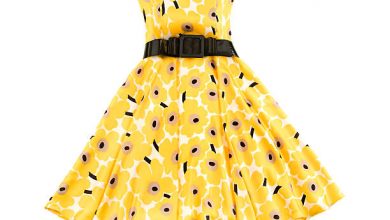“St. Lucy’s Home for Girls Raised by Wolves” by Karen Russell is a collection of short stories written by the author and published in 2006. The title story, “St. Lucy’s Home for Girls Raised by Wolves,” explores the maturation of a group of girls who have been raised by wolves and are now being assimilated into human society at a special home.
St. Lucy’s Home for Girls Raised by Wolves | Summary
“St. Lucy’s Home for Girls Raised by Wolves” follows the journey of a group of young girls who have been raised by wolves and are now being acclimated to human society at a specialized home. The story unfolds in five distinct stages, mirroring the process of their transformation from wild creatures to civilized individuals.
In the first stage, the girls arrive at St. Lucy’s Home, a peculiar institution where they are received by nuns who aim to tame and civilize them. The girls, who possess remnants of their feral nature, struggle to adapt to the human world. They are taught basic human customs such as language, table manners, and personal hygiene. However, their inherent instincts and wild behavior often disrupt their progress.
The second stage delves deeper into the girls’ journey as they undergo intense training and education. The nuns, known as “lupine linguists,” attempt to eradicate their wolf-like tendencies and instill in them the refined attributes of human society. The girls face challenges in suppressing their primal instincts and adopting human behavior, battling internal conflicts between their innate nature and the expectations of their new environment.
The third stage portrays the girls’ gradual integration into human society. As they strive to shed their animalistic past and embrace a civilized identity, they encounter personal struggles and conflicts. The story highlights the complex process of self-discovery and transformation as the girls navigate societal norms and expectations.
In the fourth stage, the girls start feeling more comfortable in their new environment. They develop a deeper understanding of the host culture, gain self-confidence, and begin to make sense of their surroundings. However, not all girls progress at the same pace, as demonstrated by Mirabella, who still struggles to adapt fully.
At the juncture of the fifth stage, the girls can interact effectively in the new cultural environment and move between the two cultures with ease. They have acquired the necessary skills and have been absorbed into human society, although remnants of their wild origins may persist.
Throughout the story, the protagonist, Claudette, reflects on her experiences and the challenges she faces, including a pivotal moment at a ball where her sister, Mirabella, disrupts the event. Eventually, the girls graduate from St. Lucy’s, but their connection to their wild past and their final encounter with their wolf family in the woods evoke conflicting emotions and a sense of belonging to both worlds.
The short story “St. Lucy’s Home for Girls Raised by Wolves” delves into topics of identity, adaptation, and the struggle to reconcile one’s roots with social standards. It provides an insightful look at the intricacies of cultural adaptation and the persistent links to one’s heritage. Russell examines issues of identity, the conflict between nature and nurture, and the difficulties of adjusting to a new environment across each stage. The story poses provocative concerns regarding the nature of mankind and the influence of societal conditioning on individual development.
St. Lucy’s Home for Girls Raised by Wolves | Analysis
The girls arrive at St. Lucy’s Home for Girls Raised by Wolves in the first stage. They are unfamiliar with human conventions and are having difficulty managing their new cultural surroundings. The stage establishes the narrative’s base and introduces the concept of cultural integration. It emphasizes the difficulties that the girls experience as they attempt to adjust and integrate into a culture that is very different from their formative years.
The second stage focuses on the girls’ transformation and education at St. Lucy’s. The nuns, acting as cultural mediators, attempt to teach the girls the ways of human society. The girls learn basic human etiquette, language, and behavior through a structured curriculum. However, the process of adaptation is not without difficulties. The girls experience confusion, frustration, and a sense of being “othered” due to their unconventional upbringing.
In stage three, the girls undergo a period of adjustment and self-awareness. They begin to recognize their differences from the human norm and the challenges they face in fully blending in themselves. The narrative explores their internal struggles as they grapple with their wolf instincts and the pressure to conform to societal expectations. The girls also start forming relationships and hierarchies within the group, reflecting their progress and adaptation.
Stage four focuses on the girls’ developing comfort and self-confidence in their new surroundings. They begin to have a sense of belonging and get a deeper grasp of the society in which they reside. However, the stage also reveals the limitations of adaptation for some individuals. Mirabella struggles to accept the changes and remains at a more rudimentary developmental stage. This stage emphasizes the complexities of embracing the fact that not all people grow at the same rate or achieve the same level of adaptation.
In the last or fifth level, the girls can engage effectively in their new cultural setting. They can negotiate between their wolf impulses and human norms, demonstrating cultural flexibility. However, the narrative also delves into the girls’ desire for home and the tension between their wolf identities and their human behaviors. Claudette’s visit to her wolf family underscores her psychological battle to reconcile her dual existence.
Overall, the stages in “St. Lucy’s Home for Girls Raised by Wolves” present a nuanced exploration of cultural adjustment. They depict the challenges, conflicts, and complexities that arise when individuals from different cultural backgrounds try to adapt to a new society. The story questions the notion of a singular “correct” way of being and emphasizes the importance of understanding and accepting individual differences in the process of incorporation.
St. Lucy’s Home for Girls Raised by Wolves | Theme
“St. Lucy’s Home for Girls Raised by Wolves” is about the difficulties and ambiguities of cultural integration. The short story delves into the difficulties the sisters confront as they transfer from their wolf upbringing to human civilization. It dives into the contradiction between their natural tendencies and cultural expectations.
The theme touches upon the concept of home and belonging. It explores the girls’ longing for their wolf family and the internal conflict they experience in reconciling their dual identities. According to the narrative, real integration does not always imply cutting links with one’s cultural heritage, but rather striking a balance between various components of one’s identity.
St. Lucy’s Home for Girls Raised by Wolves | Character Sketch
Claudette, the protagonist of “St. Lucy’s Home for Girls Raised by Wolves,” is a complex and dynamic character who undergoes a transformative journey throughout the story.
Claudette grapples with her dual identity as a girl raised by wolves and her desire to espouse human society. She experiences an internal conflict between her instinctual, wild nature and the societal expectations placed upon her. This conflict drives her character development as she seeks to reconcile these two aspects of herself.
Claudette possesses keen observational skills and is deeply reflective. She notices the nuances of her surroundings, the behaviors of others, and the shifts in her thinking. Claudette exhibits a strong sense of determination and independence. Despite facing obstacles and pressure to conform, she remains resilient and driven, charting her path rather than simply accepting the status quo.
Claudette demonstrates a strong sense of empathy towards her fellow wolf girls, particularly towards Mirabella, the youngest and most vulnerable member of their group. She displays a protective nature, willing to defend and support those she cares about, even at the risk of her acceptance within the human world.
As the story progresses, Claudette undergoes significant personal growth and transformation. She evolves from a girl struggling to navigate the expectations of both human and wolf culture into a more self-assured individual who embraces her unique identity. Her journey showcases her resilience, adaptability, and capacity for self-discovery.
Claudette can be seen as a symbolic representation of individuals caught between different cultures or identities. Her experiences reflect the challenges faced by those who feel torn between inculcation and preserving their heritage or instincts.
Overall, Claudette’s character embodies the themes of the story, offering readers a relatable and compelling perspective on the conflicts and growth that come with navigating multiple cultural worlds.
St. Lucy’s Home for Girls Raised by Wolves | Literary Devices
“St. Lucy’s Home for Girls Raised by Wolves” incorporates several literary devices to enhance its storytelling and convey its themes effectively
The story employs symbolism to represent abstract concepts and ideas. For example, the title itself, “St. Lucy’s Home for Girls Raised by Wolves,” symbolizes the transition from a wild, instinctual existence to a more civilized, human one. The wolves symbolize the girls’ primal nature and their struggle to reconcile it with societal expectations.
In the story, the transformation of the girls is metaphorically compared to the process of training and taming wild animals. This metaphorical representation highlights the challenges and difficulties they face in adapting to human society.
Irony is utilized to create contrast and emphasize certain aspects of the story. For instance, the girls’ efforts to assimilate into human society are ironically depicted through their attendance at “St. Lucy’s Home,” which is essentially a boarding school. The irony lies in the fact that the girls are not truly orphans but rather beings torn between two worlds.
An example of foreshadowing in the narrative is the recurring theme of the girls’ “inner wolf” and their struggles to suppress it. This foreshadows the internal conflicts and eventual resolutions that Claudette and her companions will face as they navigate their dual identities.
The story incorporates vivid and descriptive imagery to evoke sensory experiences and create a more immersive reading experience. Imagery is used to depict the lush wilderness inhabited by the girls, the transformation process they undergo, and the contrasting environments of the “Home” and the outside world. This imagery adds depth and richness to the narrative.
The story is narrated from the first-person perspective of Claudette. This narrative choice allows readers to experience the events and emotions through her eyes, providing a more intimate and personal connection to the story. Claudette’s perspective also enhances the exploration of identity and self-discovery, as readers witness her inner thoughts and conflicts.



